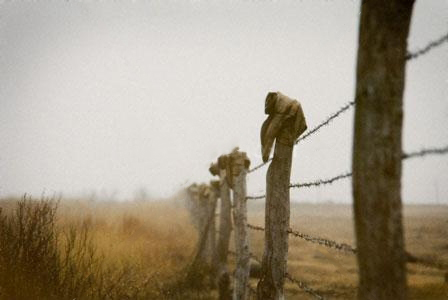Modern Civilization and the History of the Fence
While it may seem strange to consider the fence as one of the defining concepts of modern civilization, its history has huge ramifications for the way we perceive our world today. Although it is impossible to determine the exact origins of fencing in the ancient world, the impact the fence on humanity has had far reaching consequences.
Today the fence is the symbol of sanctity and security. They serve many functions such as providing a clearly defined boundary for the family property and even to protect the mailman from the neighbor’s dogs. Throughout history, however, there are some fascinating facts surrounding fences and how they have shaped the world today.
The foundations of the modern world
You might ask who first came up with the idea of fencing to define the boundaries of property owned by an individual. Perhaps the Great Wall of China was the first fence in history? What about the Walls of Jericho? No matter where the origins of the fence lie they signify the transition from a nomadic, hunter gather culture to a civilization which is based on land ownership and agriculture, the foundation of the modern world.
While the nomadic cultures that are still in existence today are respectful of the harmony between man and nature, historically this was not always the case. For example, Tacitus describes how the ancient German tribes would practice something called “shifting cultivation”. This farming method involved creating a plantation then moving on as soon as the crop was harvested. This was a common farming practice which decimated the natural resources of the area, resulting in the destruction of indigenous forests causing severe soil erosion and devastation to the land.
In defense of the fence
The shift towards defining a particular area of land by fencing it in and owning it led to a culture where that land was protected and cared for, rather than being looted for personal gain before moving on. Fence installation became a symbol for protecting the land in order to benefit the populations that lived on it, as well as an important form of defense – the root of the word “fence” as we understand it today.
Creating a boundary around an area of land and claiming it as a possession is one of the most defining concepts of humanity. As Jean Jacques Rousseau famously said “The first man who, having fenced in a piece of land, said “This is mine,” and found people naïve enough to believe him, that man was the true founder of civil society.” Protecting and defending our land from intruders and the idea of ownership is all inextricably linked with the development of the fence.
Fences throughout history
Throughout history, fences have come in all manner of styles and functions. Many stone walls erected in Cornwall during the Bronze Age remain to this day, still marking out the territories that they denoted many centuries ago. The Anglo Saxons planted hedges to define the boundaries to their properties, creating an intricate eco-system of wildlife which played an important role in providing pollinators for their crops, creating a microclimate to help their seedlings grow and protecting the land by preventing soil erosion.
The Virginia Worm fences which were created by the first American settlers were greatly admired by European travelers as they showed ingenious use of the natural resources while being incredibly cost and labor- effective. For many, the image of the white picket fence is the epitome of the American dream of home ownership with strong connotations to the heritage of the country.
Controversy vs. conservation
 Fences and the idea of land ownership have caused many controversies throughout history such as the impact of barbed wire on the West. This had wide reaching ramifications not just for the cowboys, but also for the migrating Indians, the railroad engineers and many other, later settlers. Some might even say that a fence describes the difference between the haves and the have-nots and that the idea of land ownership is one of the biggest problems of modern civilization, as it starkly contrasts the differences between rich and poor.
Fences and the idea of land ownership have caused many controversies throughout history such as the impact of barbed wire on the West. This had wide reaching ramifications not just for the cowboys, but also for the migrating Indians, the railroad engineers and many other, later settlers. Some might even say that a fence describes the difference between the haves and the have-nots and that the idea of land ownership is one of the biggest problems of modern civilization, as it starkly contrasts the differences between rich and poor.
It might be controversial, but for many the reality is that the idea of property, of protecting what is yours by installing a fence, has allowed many generations of ordinary people to create great things. As English agriculturalist Arthur Young once said, “Give a man the secure possession of a bleak rock and he will turn it into a garden. Give him a nine years’ lease of a garden and he will convert it into a desert.” It is this culture of property which has been instrumental in the development of the human capacity to plan for the future and the biggest incentive for us to protect our environment.
